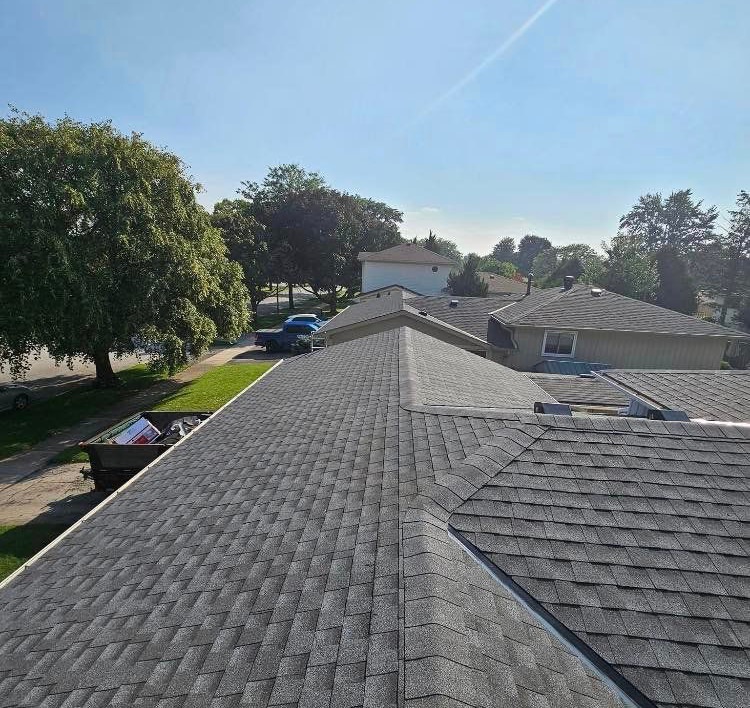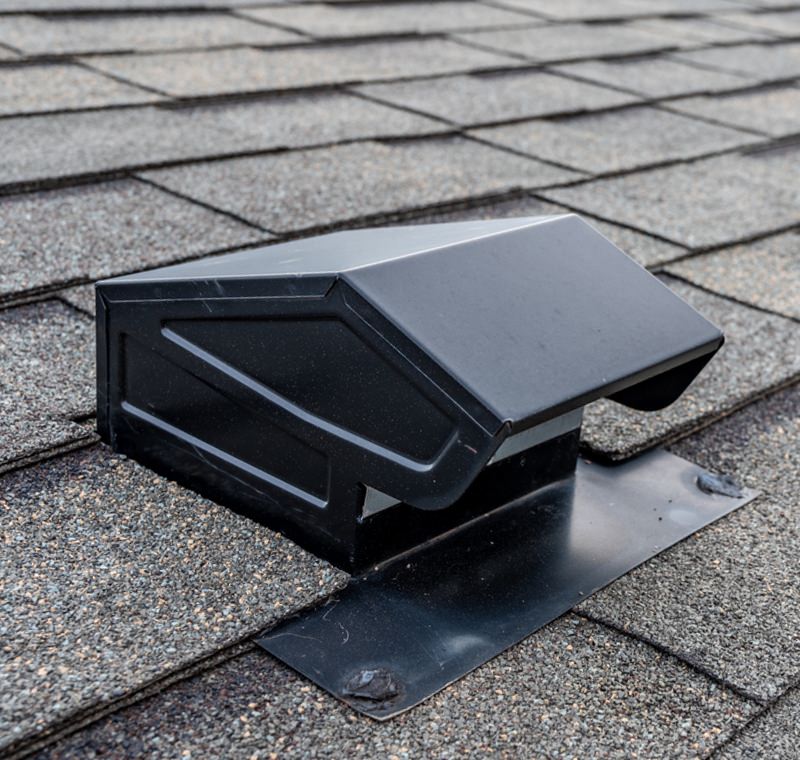What to Look for When Inspecting Your Roof from the Ground
Posted on Thursday, November 16th, 2023 | 626 views
 The best place to inspect a roof for damages or wear and tear is while standing on it, and by a professional roofing company, but sometimes we want to inspect it ourselves to save time. A well-maintained roof is crucial for the overall health and safety of your home, so it’s no surprise you’d want to inspect it and identify potential issues.
The best place to inspect a roof for damages or wear and tear is while standing on it, and by a professional roofing company, but sometimes we want to inspect it ourselves to save time. A well-maintained roof is crucial for the overall health and safety of your home, so it’s no surprise you’d want to inspect it and identify potential issues.
While it is always best to hire a professional for a thorough inspection, there are several things you can do from the ground to check for potential issues.
Inspecting Your Roof from the Ground
Assess the General Condition of the Roof
Begin by observing the overall condition of your roof. Does it look intact and stable?
Look for signs of wear, such as curled up or missing shingles, damaged or rusted flashing, and any areas that are sagging. Take a note of any areas that may require further investigation or repair by a professional roofing company.
Keep in mind that the lifespan of a typical asphalt shingle roof is around 20 to 25 years, so if your roof is approaching this age, it may be time to consider a replacement.
Check for Damaged, Missing, or Curled Shingles
 Damaged or missing shingles are usually a problem all on their own, but often enough, they’re the first visible signs of an underlying problem. Curled shingles can indicate that the shingle material is nearing the end of its life or that there is not enough ventilation in your attic.
Damaged or missing shingles are usually a problem all on their own, but often enough, they’re the first visible signs of an underlying problem. Curled shingles can indicate that the shingle material is nearing the end of its life or that there is not enough ventilation in your attic.
Take a note of any areas that appear to have damaged or curled shingles because these will need to be replaced soon to prevent leaks and other damage. Inspect your roof for shingles that are cracked, torn, or missing entirely.
If you don’t want to go on the roof you can use a ladder to just climb to the roof line. From there you’ll be able to see a lot more but still be safe. Always remember safety first.
Inspect for Moss, Algae, and Lichen Growth
Examine your roof for signs of moss, algae, or lichen growth. These living organisms are not inherently damaging to a roof but they can trap moisture against the roof surface and lead to rot and decay over time. The presence of moss and algae can be a sign of trapped moisture beneath the shingles.
While you’re on your ladder, if you notice moss, algae, or lichen on your roof, consider contacting a professional roofing company to come out and assess the situation for you.
Look for Signs of Water Damage
Depending on your roof, you might be able to see if there is any water damage occurring. Water damage is a common roof issue and can lead to costly repairs.
Just look for signs of water damage like dark streaks, puddles and stains, or any discoloration of your shingles. You can inspect the grounds around your home for signs of water pooling or roof erosion which could be a clear sign a problem with your roof is developing.
Examine The Roof Flashing
Flashing is the metal material used around the roof vents, chimneys, and/or skylights, to prevent water from entering your home. Any issues with your flashing can lead to leaks and should be repaired as soon as possible.
From your ladder you can most likely get a good visual of the flashing and any signs of damage or separation from the surrounding shingles. If that’s the case, you’ll want to get in touch with your local roofers as soon as possible to prevent a major leak which is most likely to lead to further damage – inside and outside of your home.
Inspect Gutters and Downspouts
 Use your ladder and check for any clogged or damaged gutters and downspouts which can contribute to roof problems by allowing water to back up and seep under the shingles.
Use your ladder and check for any clogged or damaged gutters and downspouts which can contribute to roof problems by allowing water to back up and seep under the shingles.
Just make sure that your gutters are always clean, free of debris, and properly attached to your home. Check that downspouts are directing water away from your home’s foundation and if everything is in check, you can move on to the next step.
Inspect the Roof’s Structure
While it may be difficult to assess your roof’s structure from the ground, you can still look for any signs of sagging or unevenness. From a safe vantage point you can use binoculars to get a closer look at the condition of the roof tiles, shingles, and flashing for any signs of wear, damage, or misalignment.
A sagging roof is not always easy to see but when it is sagging, it usually means there’s structural issues or damaged and weakened rafters, all of which will require professional help. Regular inspection of the roof, especially after severe weather, can help in early detection of potential structural problems.
Get Your Ladder and Start Inspecting!
The good news is, you don’t actually need to go on your roof to inspect it, and just using a ladder is a much safer way of doing it too. If you see any signs of damage, don’t hesitate to reach out to your local roofing company, and if you live in Burlington, Desi’s Roofing would be more than happy to send out a technician to help you.
Read More...
 Desi's Roofing has been providing high quality roofing services in Burlington since 1959 on a foundation of quality work and customer service. We publish these articles in order to help our customers and casual readers to get the most out of their roof and learn to manage and maintain it over the years.
Desi's Roofing has been providing high quality roofing services in Burlington since 1959 on a foundation of quality work and customer service. We publish these articles in order to help our customers and casual readers to get the most out of their roof and learn to manage and maintain it over the years.
If there is a particular subject you'd like us to write about feel free to contact us at 905-319-0880 anytime.
Leave a Reply